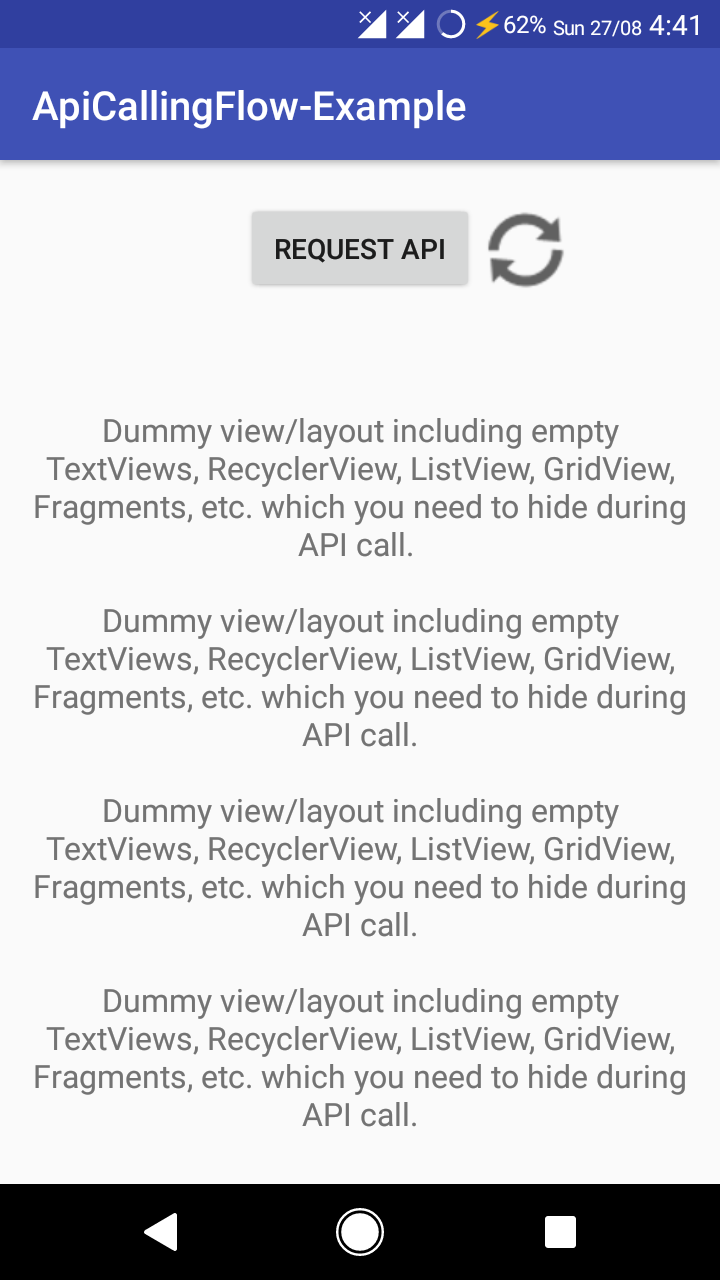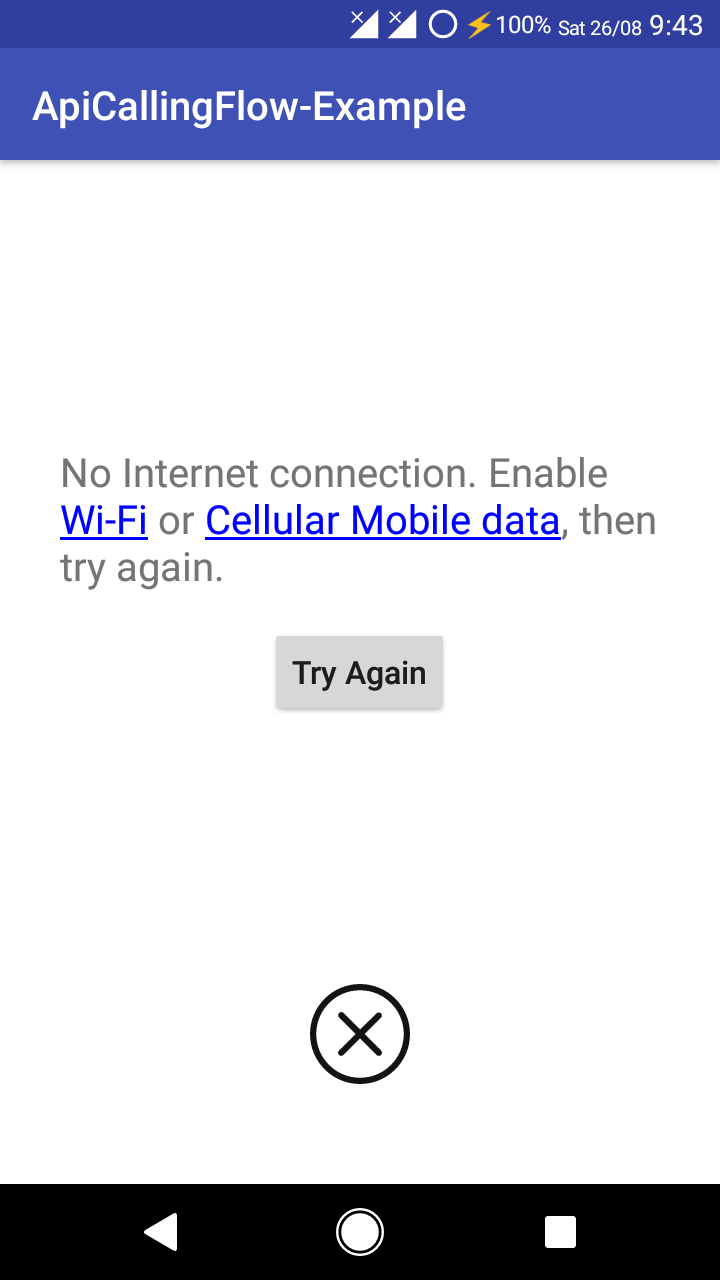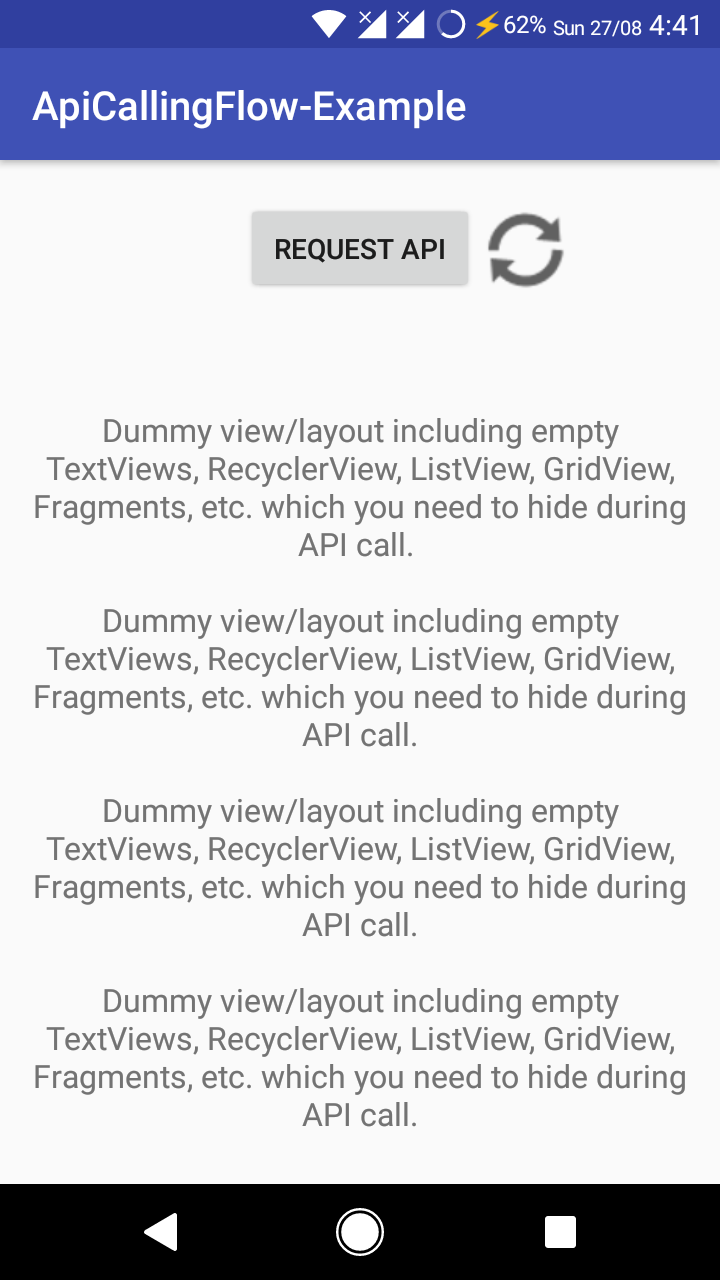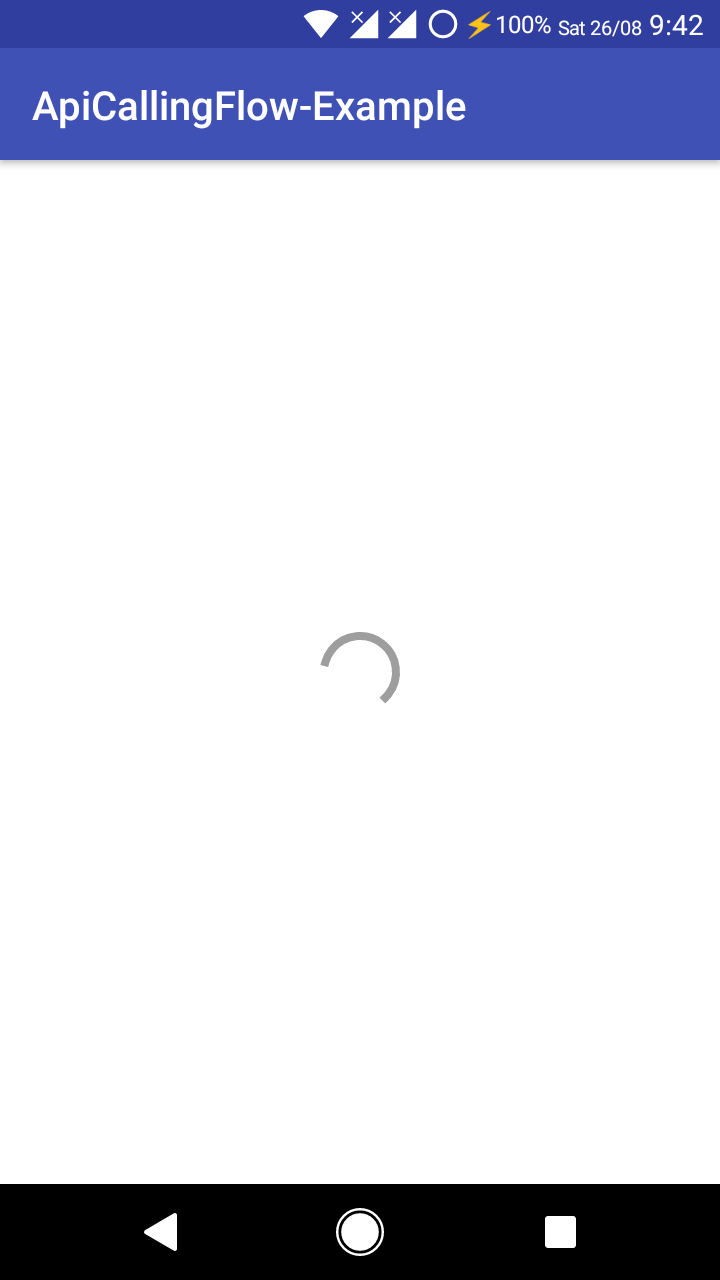API Calling Flow
API Calling Flow is a Android library which can help you to simplify handling different conditions while calling an API (Web Service) in Android.
Download example App here or checkout example.
Features
- Internal Network State Checking.
- On screen Setting's shortcuts to enable Wi-FI or Mobile Data.
- Hide unloaded screen during API call and show progress bar with white or transparent background.
- "Try Again" same API after enabling Network connection.
- Call API only if the Network connection is enabled.
- Remove progress bar after successfully loading data on screen.
- Show full-screen errors to users and hide unloaded screen from user for better user experience.
Setup
In your Project's build.gradle file:
allprojects {
repositories {
...
maven {
url 'https://jitpack.io'
}
...
}
}
In your Application's or Module's build.gradle file:
dependencies {
...
compile 'com.github.RohitSurwase.API-Calling-Flow:api-calling-flow:1.0'
...
}
Screenshots
Case 1. when Network connection is not available-
 |  |
|---|---|
| Network Connection is not available | Setting's shortcut to enable Network Connection |
Case 2. When Network connection is available and API is successful-
 |  |  |
|---|---|---|
| Network Connection is available | API requested | API successful, data loaded |
Case 3. When Network connection is available but API is failed-
 |  |  |
|---|---|---|
| Network Connection is available | API requested | API failed, error shown |
Code Example
Refer to the example for complete implementation and usage.
- Step 1: Get reference to root layout of Activity or Fragment. Root layout can be any ViewGroup
Example-
RelativeLayout parentLayout = (RelativeLayout) findViewById(R.id.rootLayout);
-
Step 2: Crete Object of ApiCallingFlow and implement methods.
- 1st parameter - context
- 2nd parameter - parentLayout from step 1
- 3rd parameter - true for transparent background, false for default white background
-
Step 3: Pass function to call current API on click of try again.
private void requestTestApi() { ... ApiCallingFlow apiCallingFlow = new ApiCallingFlow(this, parentLayout, false) { @Override public void callCurrentApiHere() { //Step 3: Pass function to call current API requestTestApi(); } } ; ... } -
Step 4: Get current Network state using apiCallingFlow.getNetworkState() and request API accordingly.
-
Step 5: Call apiCallingFlow.onSuccessResponse() in API success function.
-
Step 6: Call apiCallingFlow.onErrorResponse() in API error function.
License
Copyright 2017 Rohit Surwase
Licensed under the Apache License, Version 2.0 (the "License"); you may not use this file except in compliance with the License. You may obtain a copy of the License at
http://www.apache.org/licenses/LICENSE-2.0 Unless required by applicable law or agreed to in writing, software distributed under the License is distributed on an "AS IS" BASIS, WITHOUT WARRANTIES OR CONDITIONS OF ANY KIND, either express or implied. See the License for the specific language governing permissions and limitations under the License.
Contributing to API Calling Flow Library
Just make pull request. You are in!